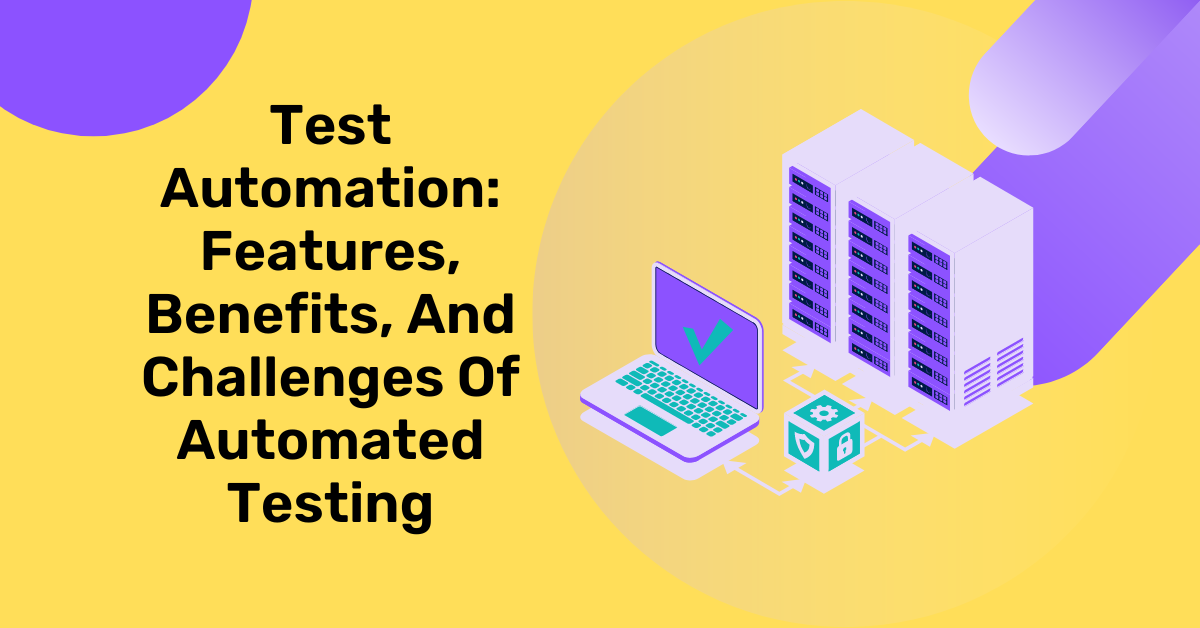In this Test Automation guide, I will talk about the features, benefits, and challenges of automated testing.
Having provided software QA consulting services for many years, we confidently assess the features, benefits, and challenges of employing automated testing in the context of end-to-end testing of online applications.
Automated testing is still not commonly adopted by companies for several reasons, but the primary concern is that the labor required to design and maintain an automated test suite is significantly higher than the effort needed to run manual tests.
Automated testing, as in contrast to manual testing, is most closely related to the process of creating new software. An automated test can’t be developed unless you have a firm grasp on the program’s internal structure, critical points, and many implementation details.
You should comment on intricate methods and functions used to avoid creating unreadable and difficult to maintain tests; standards should be maintained and advice such as the utilization of red tests should be followed.
Finally, you’ll want your test to make noise so that the tester has some idea of where and what may go wrong in the event of an error. To overcome these limitations, test engineers working on automated systems must possess a significantly higher level of expertise than those working on manual testing.
Automation testing has evolved into an art form in its own right as a result of this.
Table of Contents
Benefits And Drawbacks
The key benefits of employing automated testing are:
- Quickly and effectively test a huge number of software functionalities
- Test the same software several times.
- Ability to run simultaneous tests to assess load capacity or collaborate in real time.
- Confidence in the result (provided that the test is written well)
- Low incidence of false positives and negatives (as long as the test is reliable) (as long as the test is solid)
You undoubtedly want to run tests numerous times after each new release, which is why you want to build an automated test suite. If a test only has to be run once, the difficulty of automating it may outweigh the benefits.
From a purely theoretical standpoint, incorporating automated tests into the software life cycle is essential for any company, as it greatly simplifies testing in the long run. However, when we examine the economic reality, we see that developing an automated test suite is time-consuming, expensive, and complicated.
Because good automated tests require a mix of programming and testing expertise, it may be challenging for a company to divert talented individuals from other departments to automate tests.
Investing in automated testing means making software easier to maintain, offering safer and more trustworthy updates, reducing the danger of a customer discovering a vulnerability in a product, and saving time spent on the testing process in the long run.
Although it may seem superfluous and avoidable on paper, a company serious about generating high-quality software that can be improved and safeguarded over time must engage in automated testing.
READ ALSO: Breachers Gonna Breach: Protect Your Organization From Internal Threats
Resources And Time
One of the key incentives for automating testing is to save time in the long term. Several tests are done repeatedly over a period of time. Each time a new line of code is introduced to the program, the test should be executed. When compared to doing a manual test, writing and scheduling an automated test saves time.
Additionally, if the software is compatible with multiple browsers or operating systems, the number of tests conducted with each update increases significantly. After they’ve been produced, automated tests can be reused indefinitely without incurring further expenses.
Because test automation is more efficient than manual testing, it saves the company time and money.
Accuracy
Even the most meticulous tester may find manual testing laborious and prone to errors. Automated tests repeat the same steps each time they run, ensuring that detailed records of the results are kept.
Testers who are no longer required to do manual tests may be able to devote more time to creating new automated tests or implementing more advanced features.
READ ALSO: How Codeless Testing Tools Empower Small Security Teams
FAQs on Test Automation
What types of tests can be automated?
- Regression testing
- Smoke testing
- API testing
- Unit testing (with limitations)
What are some popular test automation tools?
- Selenium
- Appium
- Cypress
- Katalon Studio
- Robot Framework
Is test automation a replacement for manual testing?
No, automation complements manual testing. Automation handles repetitive tasks, while manual testing is valuable for exploratory testing and user experience evaluation.
READ ALSO: 11 Thrifty Reasons Why Mobile Automation Testing Is Needed
How do I decide which tests to automate?
Prioritize tests that are:
- Frequently executed
- Repetitive and time-consuming
- Critical to core functionalities
What are some best practices for test automation?
- Start small and focus on automating high-impact tests.
- Select the appropriate tools based on your specific needs and level of expertise.
- Write clear, maintainable, and reusable test scripts.
- Integrate automation with your development lifecycle.
- Regularly review and update your automated tests.
How can I measure the success of test automation?
- Track metrics like test execution time, defect detection rate, and return on investment (ROI).
- Analyze the impact of automation on software quality and development speed.
What are the future trends in test automation?
- Increased use of AI and machine learning for test case generation and analysis.
- Growth of low-code/no-code automation tools for wider accessibility.
- Focus on intelligent automation that can adapt and learn from test data.
How can I learn more about test automation?
- Online courses and tutorials
- Certification programs in test automation
- Industry publications and blogs
Is a career in test automation a good option?
The demand for skilled test automation professionals is high. If you enjoy scripting, problem-solving, and software quality assurance, it can be a rewarding career path.
Where can I find jobs in test automation?
Many job boards list test automation positions. Look for roles involving test automation tools, automation frameworks, and software development methodologies.
INTERESTING POSTS
- What Is Automated IP Address Management?
- How To Get Started With Software Test Automation
- Clear VPN Review – The Pros And Cons Of Using VPN Services
- What Is Business Benefits Of The Blockchain Market?
- How To Optimize Shopify Performance And Reduce Bounce Rates
- How To Position Yourself For An Entry-Level Cybersecurity Job
- FastestVPN Review 2022: Is It Worth It?
- Website Heatmap: What It Is, Why You Need It, And How To Use It
- Top 5 Front-End Frameworks Web Developers Should Consider
About the Author:
Daniel Segun is the Founder and CEO of SecureBlitz Cybersecurity Media, with a background in Computer Science and Digital Marketing. When not writing, he's probably busy designing graphics or developing websites.








